How Many Squares? Class 5 Notes Maths Chapter 3
| Table of contents |

|
| What are 2 Dimensional (2D) Figures? |

|
| What is Area? |

|
| What is Perimeter? |

|
| Counting Grids |

|
| Area of Triangles |

|
| Area of Irregular Shapes |

|
| Patterns |

|
What are 2 Dimensional (2D) Figures?
- 2D means "two-dimensional," which just means they have two measurements: width and height.
- Dimensions are like the size of a shape in different directions, but 2D shapes only have width and height, not depth.
- They're like drawings on a piece of paper.
- We can't hold them because they don't have depth.
 2D Figures
2D Figures
What is Area?
- The area is how much space a flat shape takes up.
- It's like counting how many small squares fit inside a shape.
- The area is measured in square units like square meters (m²), square centimetres (cm²), square inches (in²), or square feet (ft²).
- Shapes like circles, triangles, squares, and rectangles all have area.
- Area is the space inside the lines that make up a shape.
- For example, look at the image below and see how different shapes take up different areas. Some are small and some are big. We will learn more about them going forward.
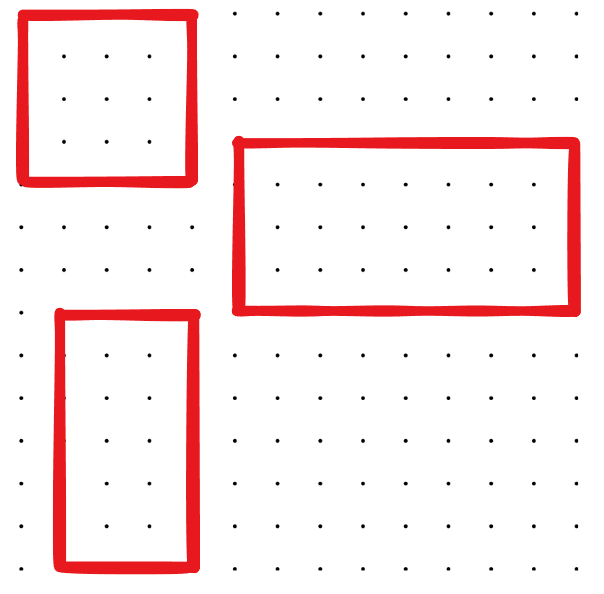
What is Perimeter?
- Perimeter means the total distance around a shape.
- It's like walking around the edge of a shape and measuring how far you've gone.
- The perimeter is how much ribbon you'd need to go all the way around a shape.
- Shapes with different sizes can have the same perimeter if you measure all the way around them.
- So, it's like the outline length of a shape when you stretch it out in a straight line.
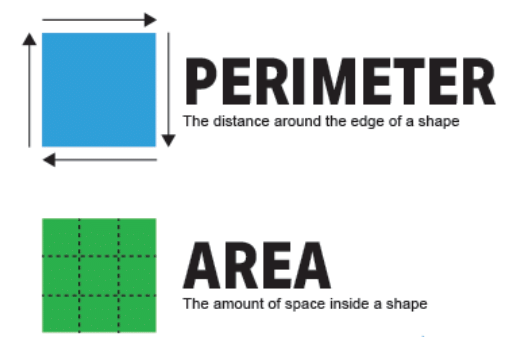

Sol: Yes, on comparing my hand with my father’s palm his palm is bigger than mine and also my father’s hand is longer than my hand.
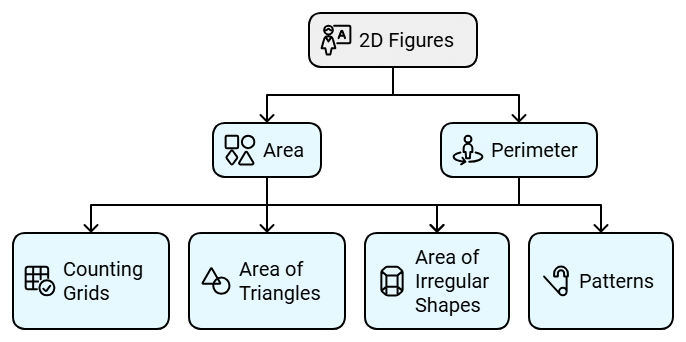
Counting Grids
- To find the area and perimeter of any object we use the counting grids method.
- The areaof a plane figure is the number of squares required to completely cover it.
- The perimeter of a plane figure can be measured by counting the sides/edges of the squares that form the boundary.
Finding the Area
- Let's find the area of the grid given below.
- We can simply count the total number of small squares present in it, because the area is nothing but space occupied by the shape of the object.
- Therefore, the area of the grid = 16 square unit

Finding the Perimeter
To find the perimeter, count the sides or edges of the squares that form the boundary of the shape. The perimeter of the grid = 16.
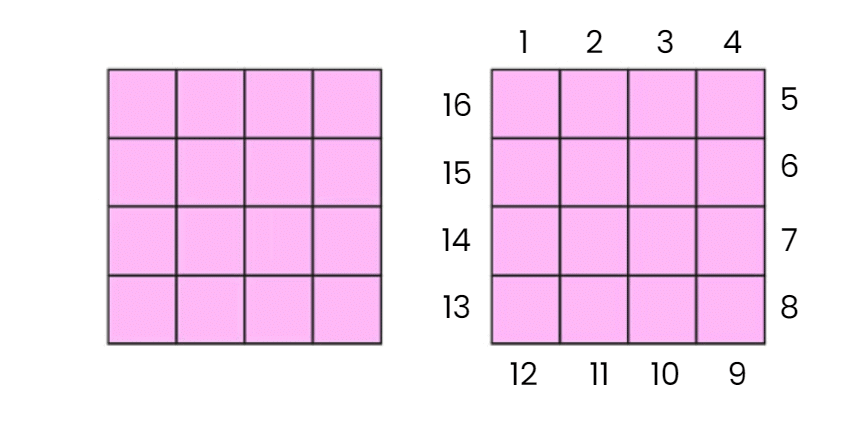
Example: Count the area of stamps C and E, assuming that one box on the grid paper makes up 1 square cm.
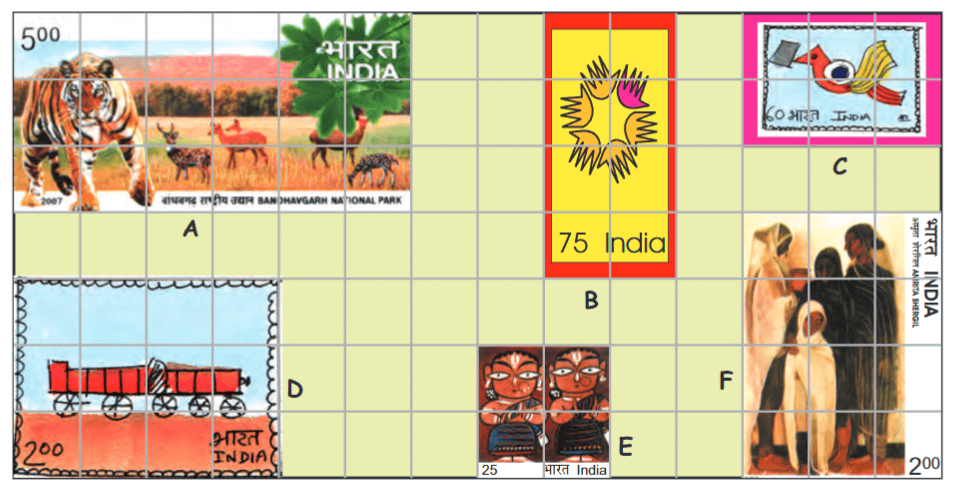
Sol: To find the area, count the number of squares inside the stamps.
Area of Stamp C: There are six boxes that make up the stamp. Therefore, the area is 6 square cm.
Area of Stamp E: Stamp E is made up of four boxes. The area of this stamp is 4 square cm.

Relationship Between Area and Perimeter
- Consider two rectangles A and B having the same perimeter as 18 units.
 Rectangle A
Rectangle A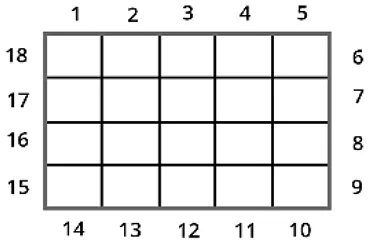 Rectangle B
Rectangle B - Observe that both of them have different areas (Area of Rectangle A = 18 square units whereas Area of Rectangle B is 20 square units)
 Rectangle A
Rectangle A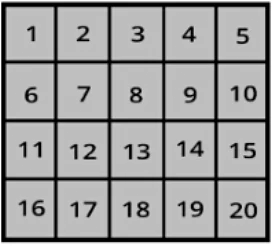 Rectangle B
Rectangle B
Hence, we conclude that:
- The two shapes having the same perimeter can have different areas.
- Similarly, two shapes having the same areas can have different perimeters.
Area of Triangles
- A triangle is a 3-sided polygon, which is formed when three straight lines meet.
- All triangles have three sides and three corners (angles).
- Examples of triangles in real life: are pyramids, sailing boats, sandwiches and pizza slices etc.
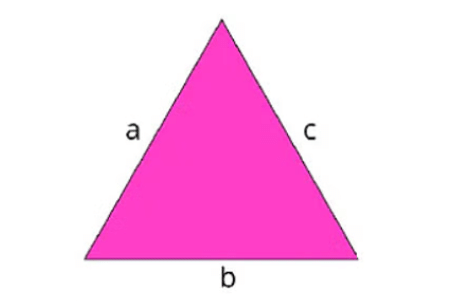
Finding the Area of a Triangle
- Look at the green triangle below. Can you guess how we can find the area of the triangle inside the rectangle?
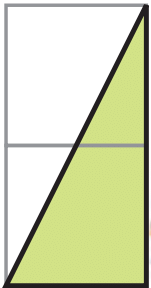
- The area of the rectangle = 2 square cm
- The triangle is exactly half of the rectangle, so divide the rectangle into two equal triangles.
- Therefore, the area of the triangle is half of the area of the rectangle, i.e., 1 square cm.
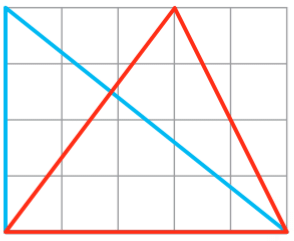
Sol:
(i) The blue triangle: It divides the rectangle into two equal parts. Therefore, the area of the triangle is half of that of the rectangle.
Area of rectangle = 20 square cm
Area of blue triangle = 10 square cm
(ii) The red triangle: The red triangle divides two different rectangles into half as shown in the picture:
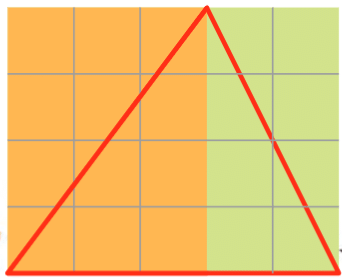
The area of the triangle = half of the area of the yellow rectangle + half of the area of the green rectangle
= half of 12 square cm + half of 8 square cm
=6 + 4 square cm
= 10 square cm
Area of Irregular Shapes
- Irregular shapes are those that don't have equal sides or angles.
- To find the area of irregular shapes, we can break them into smaller, familiar shapes.
- These smaller shapes can be polygons like squares, rectangles, triangles, etc.
- For example, if we have an irregular shape made up of polygons P, Q, R, S, T, and U, we find the area of each polygon and add them up to get the total area of the irregular shape i.e. area of the given irregular shape = area of T + area of P + area of Q + area of R + area of S + area of U

- Another example: If we have a shape made up of polygons A, B, C, D, E, F, and G, we find the area of each and add them to find the total area i.e. area of the given irregular shape = area of A + area of B + area of C + area of D + area of E + area of F + area of G
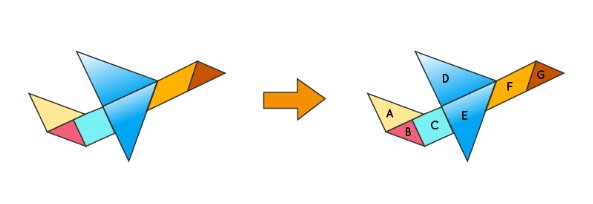
- Therefore, we use methods like breaking irregular shapes into known shapes.
- We might count unit squares within the shape or decompose them into polygons for accurate area calculation.
Solved Example
Example: Find the area of the shape in square units.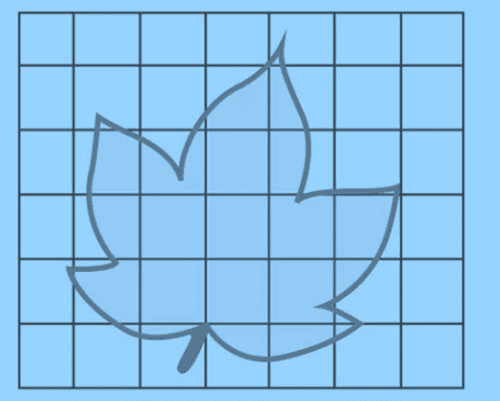
Sol: Let us count the squares that are completely covered, half covered, and so on. These can be marked as shown below:
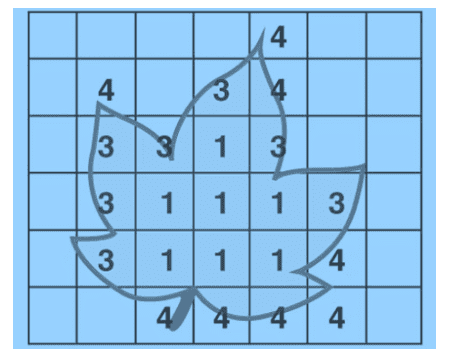
We need to write the number of squares that are covered by the shape.

For fully covered square grids, we can take 1 square unit for each.
For half-covered squares, we should assign ½ square units for each.
If the square covers more than half the portion, then assign 1 square unit for each such portion.
If the square grid is covered less than half, then assign 0 square units for each such portion.
Therefore, the area of the given shape = 7(1) + 0(½) + 7(1) + 8(0) = 7 + 0 + 7 + 0 = 14
Hence, the area of the given irregular shape is 14 square units.
Patterns
- A pattern is like a repeated arrangement of shapes, numbers, or colours.
- Examples include number patterns, image patterns (like shapes), logic patterns, and word patterns in math.
Image/Shape Patterns
- Image patterns are like a sequence of shapes or objects.
- For example, in a picture with umbrellas, they point down, left, up, and then right in a repeating pattern.
 Image Pattern
Image Pattern
Example: Observe the below figure and identify the missing part.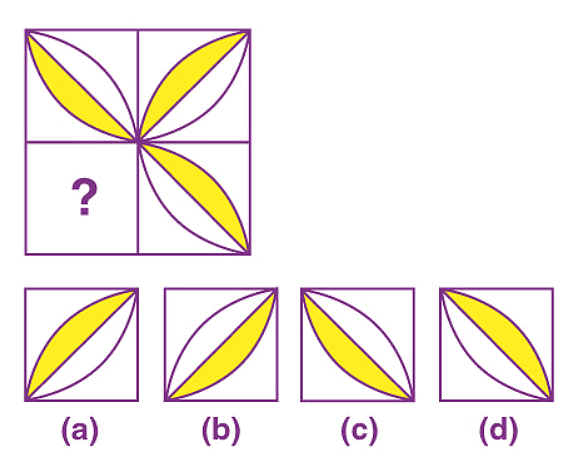 Sol: Consider the question figure, where the design in each part will be obtained by rotating the previous design by 90 degrees in the clockwise direction.
Sol: Consider the question figure, where the design in each part will be obtained by rotating the previous design by 90 degrees in the clockwise direction.
So, the missing part will be option (b).
Hence, the complete figure is:
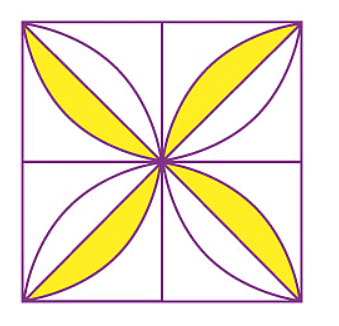
|
31 videos|192 docs|41 tests
|
FAQs on How Many Squares? Class 5 Notes Maths Chapter 3
| 1. What are 2 Dimensional (2D) Figures? |  |
| 2. How do you calculate the area of a rectangle? |  |
| 3. What is the difference between area and perimeter? |  |
| 4. How do you find the area of a triangle? |  |
| 5. How can we find the area of irregular shapes? |  |





















